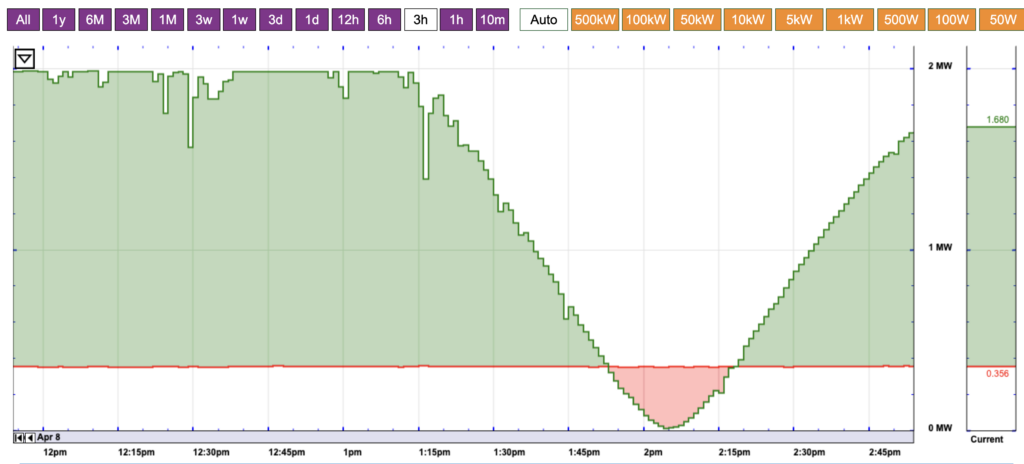On April 8th, 2024, a total solar eclipse cast a shadow across North America, plunging parts of Mexico, the United States, and Canada into temporary darkness. While millions marveled at this celestial spectacle, grid operators and utility companies were working behind the scenes to manage the sudden and significant impact on solar energy production.
Solar power has become an increasingly important part of our electricity mix in recent years, with countless photovoltaic panels adorning rooftops and sprawling solar farms dotting the landscape. However, the sun’s output is not constant, and solar eclipse events bring this variability into sharp focus.

As the moon slid between the Earth and the sun on April 8th, blotting out the light, solar panels in the path of totality saw their output plummet. The graph accompanying this article, captured from one of our solar developments in Illinois, tellingly illustrates this dramatic drop. As the eclipse reached its peak, electricity generation fell to nearly zero, creating a deep, V-shaped trough in the facility’s power curve.
While the eclipse itself lasted only a matter of minutes, the rapid reduction and subsequent restoration of solar output posed a unique challenge for grid operators. They had to quickly ramp up alternative power sources, primarily dispatchable generation like natural gas plants, to compensate for the temporary loss of solar supply and maintain the delicate balance between electricity supply and demand.
In regions with substantial solar capacity, this eclipse-induced dip in renewable generation had the potential to cause short-term spikes in wholesale electricity prices. The sudden scarcity of solar power, combined with the increased demand on conventional power plants and the costs associated with balancing the grid, could have led to temporary price shocks.
However, the average consumer likely didn’t notice much impact on their electricity bill. Utility companies and grid operators have become increasingly adept at planning for solar eclipses and employing strategies to mitigate their effects. In the weeks and months leading up to the event, they coordinated standby capacity, scheduled power transfers from unaffected regions, and leveraged diverse energy resources to ensure a stable supply of electricity.
Moreover, most residential customers are insulated from short-term fluctuations in wholesale power markets, as they are on fixed retail rates. Even larger commercial and industrial customers, who may have indexed energy prices, would have seen only minor cost increases compared to the usual seasonal variations.
While the 2024 solar eclipse provided a fascinating case study in grid resilience and flexibility, it also underscored the growing importance of these qualities in our evolving energy landscape. As renewable sources like solar and wind make up an ever-larger share of our electricity mix, grid operators must become increasingly adept at managing variability on both short and long timescales.
Thankfully, through proactive planning, operational coordination, and the strategic use of diverse energy resources, our power providers have demonstrated their ability to handle even the most dramatic astronomical events without major disruptions to end users. As we continue to transition towards a cleaner, more sustainable energy future, this resilience will be key to keeping the lights on, come rain or shine… or even during a solar eclipse.
So the next time the moon blots out the sun, take a moment to appreciate not only the breathtaking celestial display but also the hard work and careful planning that goes on behind the scenes to ensure that, despite the temporary darkness, our world remains brightly lit.




